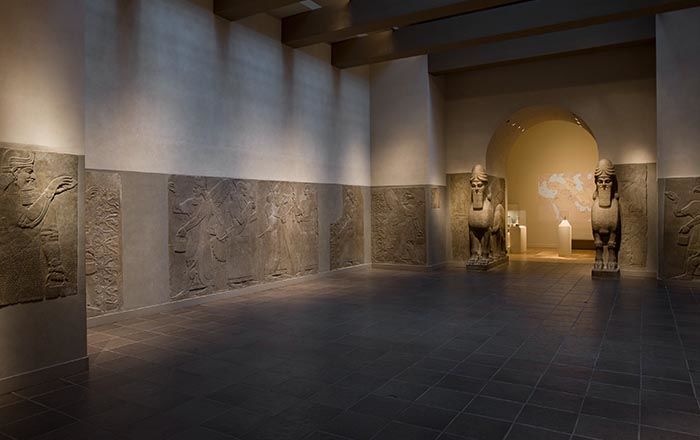Shell engraved with winged female deity, sphinxes, and lotus plants
Not on view
The shell of a species of large clam (Tridacna squamosa), native to the Indian Ocean, the Red Sea, and the Persian Gulf, was used to carve a distinctive type of cosmetic container during a short period from the late seventh to the early sixth century B.C. More than a hundred containers of this type survive, and have been found throughout the Near East and Mediterranean, as far east as Iran and as far west as Italy. Unworked shells have been found in Palestine and Transjordan, suggesting that the workshops where these containers were manufactured were located in these regions.
This remarkably preserved shell bears elaborate incised decoration on the outer surface. A four-winged figure wearing an intricate embroidered or woven garment holds floral branches in both hands, and lotus flowers and buds sprout from her shoulders. Two small winged sphinxes flank her, each surrounded by more branches which sprout buds, blossoms, and palmettes. Decorative patterning covers much of the surface, including the wings of the central figure and the sphinxes, their cross-hatched hairstyles, the stems of the branches, and a border that runs along the bottom of the scene. On the inner surface of the shell, a border of triangles and another row of blossoms and buds has been incised around the edge. A hole pierces the shell at the chest of the central figure.
This image cannot be enlarged, viewed at full screen, or downloaded.

